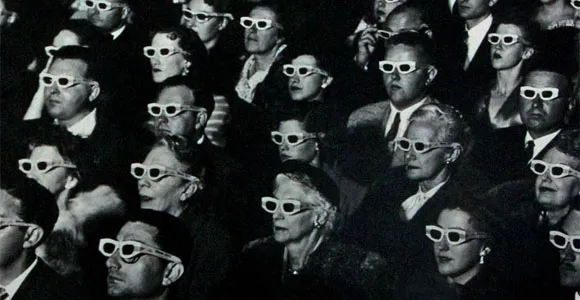Are We Close To 3D Movies Without The Ugly Glasses?
The Future Is Now!

You hate wearing 3D glasses. That’s ok, you’re in a very large boat. Studios and theaters have tried to make it more fun for us; I’ve got a great pair of Harry Potter rimmed glasses from Harry Potter and the Deathly Hallows Part 2, The Avengers had an array of different designs, the last Star Wars re-release got podracing glasses, and most recently we learned The Hobbit would be getting a very Tolkien-esque pair. Honestly, I don’t care for 3D at all but it would be a lot more pleasant if I didn’t have to wear those glasses. Well, thanks to a new study, that day could be closer than we think!
The new research out of South Korea was published in Optics Express by Youngmin Kim, Keehoon Hong, Jiwoon Yeom, Jisoo Hong, Jae-Hyun Jung, Yong Wook Lee, Jae-Hyeung Park, and Byoungho Lee. I’ll give you their abstract first and then try and break it down.
In a typical auto-stereoscopic three-dimensional display, the parallax barrier or lenticular lens is located in front of the display device. However, in a projection-type auto-stereoscopic display, such optical components make it difficult to display elemental images on the screen or to reconstruct a three-dimensional image, even though a projection-type display has many advantages. Therefore, it is necessary to use a rear projection technique in a projection-type auto-stereoscopic display, despite the fact that this is an inefficient use of space. We propose here a frontal projection-type auto-stereoscopic display by using a polarizer and a quarter-wave retarding film. Since the proposed method uses a frontal projection scheme and passive polarizing components, it has the advantage of being both space saving and cost effective. This is the first report that describes a frontal projection-type auto-stereoscopic display based on a parallax barrier and integral imaging by using a projector. Experimental results that support the proposed method are provided.
Got all that?
Well Wired Science explains it a bit more. When watching a 3D film, there are two projectors showing two different images on the same screen. “But needing two projectors perfectly synced in a theater is awkward and expensive,” writes Wired. “There are some glasses-free methods around, where a special filter covering the screen sends some of the light to your right eye and some to your left, creating a 3-D image. This is the technology in Nintendo’s 3DS gaming system and several smart phone displays, such as the HTC Evo 3D. In a movie theater, this glasses-free 3-D technique would require the projector to sit behind the screen, but most theaters are not designed for this.”
But the method the South Koreans have worked on would keep the projectors in the rear of the theater while utilizing optical technology.
“A special array sits in front of the projector and polarizes its light. A filter covering the screen then obscures different vertical regions of the screen, like the slats of venetian blinds,” writes Wired. “Each of your eyes, sitting at a slightly different angle, has some of the screen blocked and some of the screen visible. The movie has the right-eye and left-eye images interleaved in vertical columns with one another. The trick then is to have the light visible to your left eye contain the left-eye pixels and vice versa for the right eye.”
The only downfall to the new technology as it stands is it would produce a rather low resolution image but I’m sure they’ll figure out a solution to that before long.
What do you think? Would a 3D film without glasses change your opinion on the style or do you still want nothing to do with it?
(via Forbes)
Are you following The Mary Sue on Twitter, Facebook, Tumblr, Pinterest, & Google +?
Have a tip we should know? [email protected]